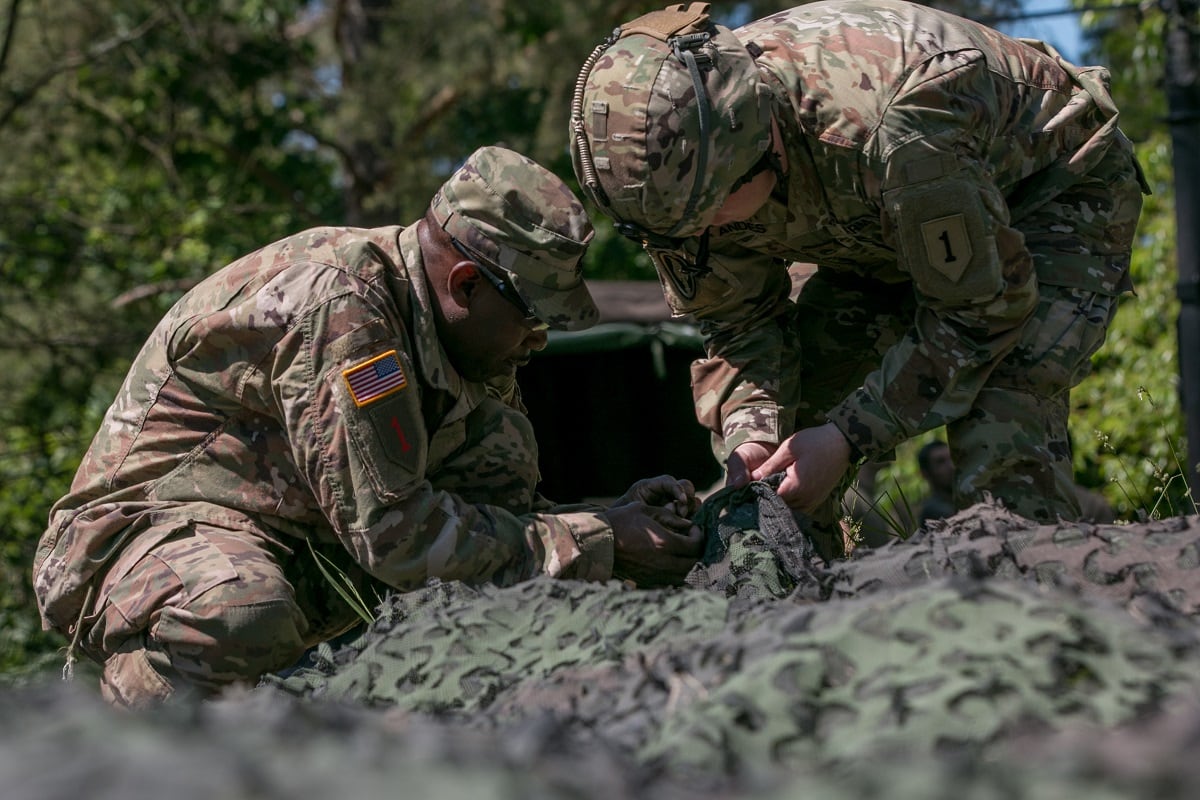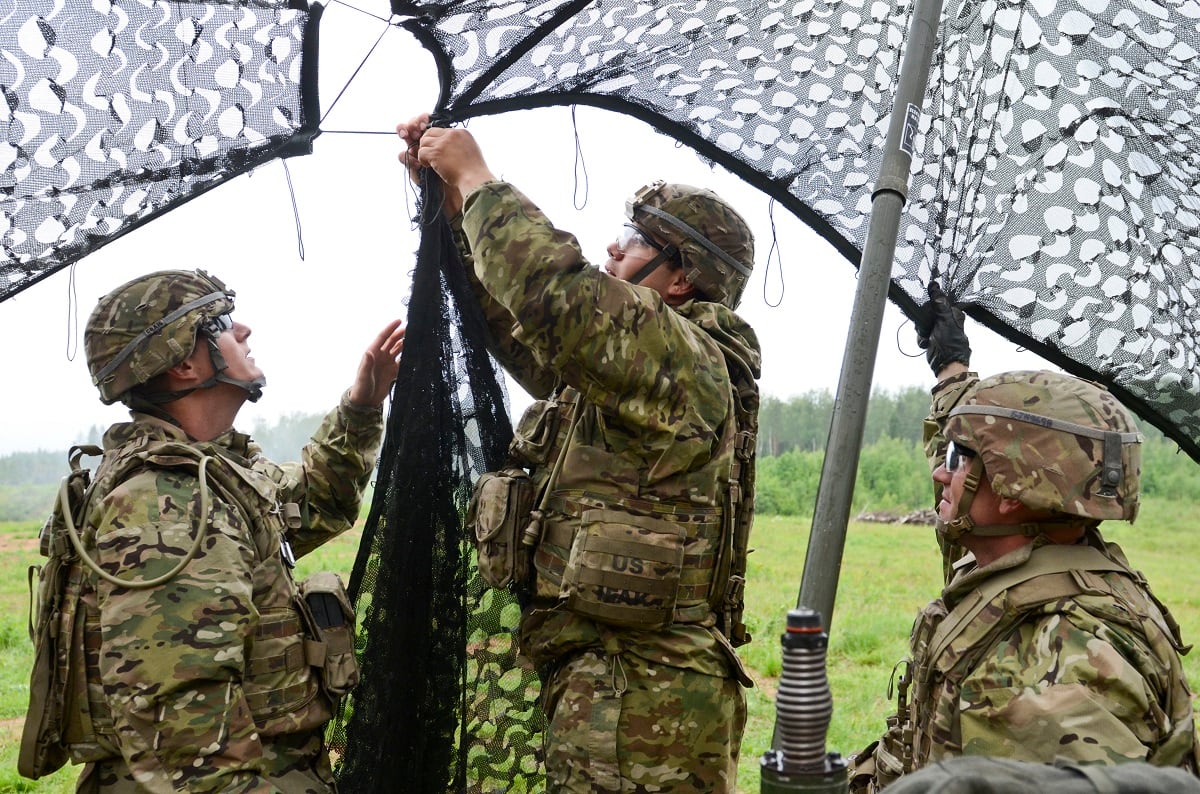Top Army brass are looking to what seems like a simple item, camouflage netting, to solve a very modern technological problem — electronic signals that give away soldier and unit positions.
A variety of camouflage being developed now is aimed at hiding electronic signatures and concealing soldiers and their equipment, masking them to the eye and hiding them from sensors in modern communications and targeting equipment.
The next-generation netting is expected to offer state-of-the-art signature concealment for “multispectral protection.”
The Army awarded contracts a year ago for engineering, manufacturing and developing the new Ultra-Lightweight Camouflage Net System, or ULCANS.
RELATED

This week, Army Chief of Staff Gen. Mark Milley gave lawmakers a better understanding about what the service is after in its efforts to develop the all-weather camouflage.
The key to the camouflage is the electronic signature, both from heat produced by humans and vehicles and also the invisible signature of electronic systems, Milley said at a House Appropriations Committee hearing on Army modernization.
“We know that adversary acquisition systems are very, very capable,” Milley said.
Those camo systems, from netting strung over vehicles to ghillie suits used by snipers, break up electronic or heat signatures, he said.
So, the Army’s putting money behind those initiatives.
“And you’re right, it’s not as glamorous as the others, but survivability is key,” Milley said.
The ULCANS is headed to units this year, according to plans announced by the Army.
It will replace woodland and desert netting in use since the 1990s. The new color scheme will include light/dark woodland, snow/alpine and desert/urban variants.

The product came out of the Army’s project management office of Expeditionary Energy and Sustainment Systems, which is under the Program Executive Office for Combat Support and Combat Service Support.
The goal is to defeat the advancing sensor technology of adversaries such as Russia and China, which are creating anti-area/access denial problems and capabilities gaps for Army maneuver and fires.
Scientists with the U.S. Army Combat Capabilities Development Command Soldier Center under Army Futures Command, are working on the competitive prototyping phase, which uses testing events unique to NSRDEC.
“As adversary technology continues to evolve, we have to be able to quickly reduce battlefield signatures and limit the enemy’s ability to detect personnel, weapons systems, vehicles, and other equipment,” said Claudia Quigley last year, when serving as director of the Expeditionary Maneuver Support Directorate.
As recently as December, Army and special operations snipers were testing a new ghillie suit, dubbed the Improved Ghillie System, or IGS.
The test was one step in a larger effort by Army researchers to replace the current Flame Resistant Ghillie System. It was first fielded in 2012 to Army and Marine snipers.
An undisclosed number of suits were tested. But the Army does plan to buy as many as 3,500 suits, according to an Army posting. There are an estimated 3,300 snipers across the Army, including conventional, Guard and special operations snipers.
Todd South has written about crime, courts, government and the military for multiple publications since 2004 and was named a 2014 Pulitzer finalist for a co-written project on witness intimidation. Todd is a Marine veteran of the Iraq War.




